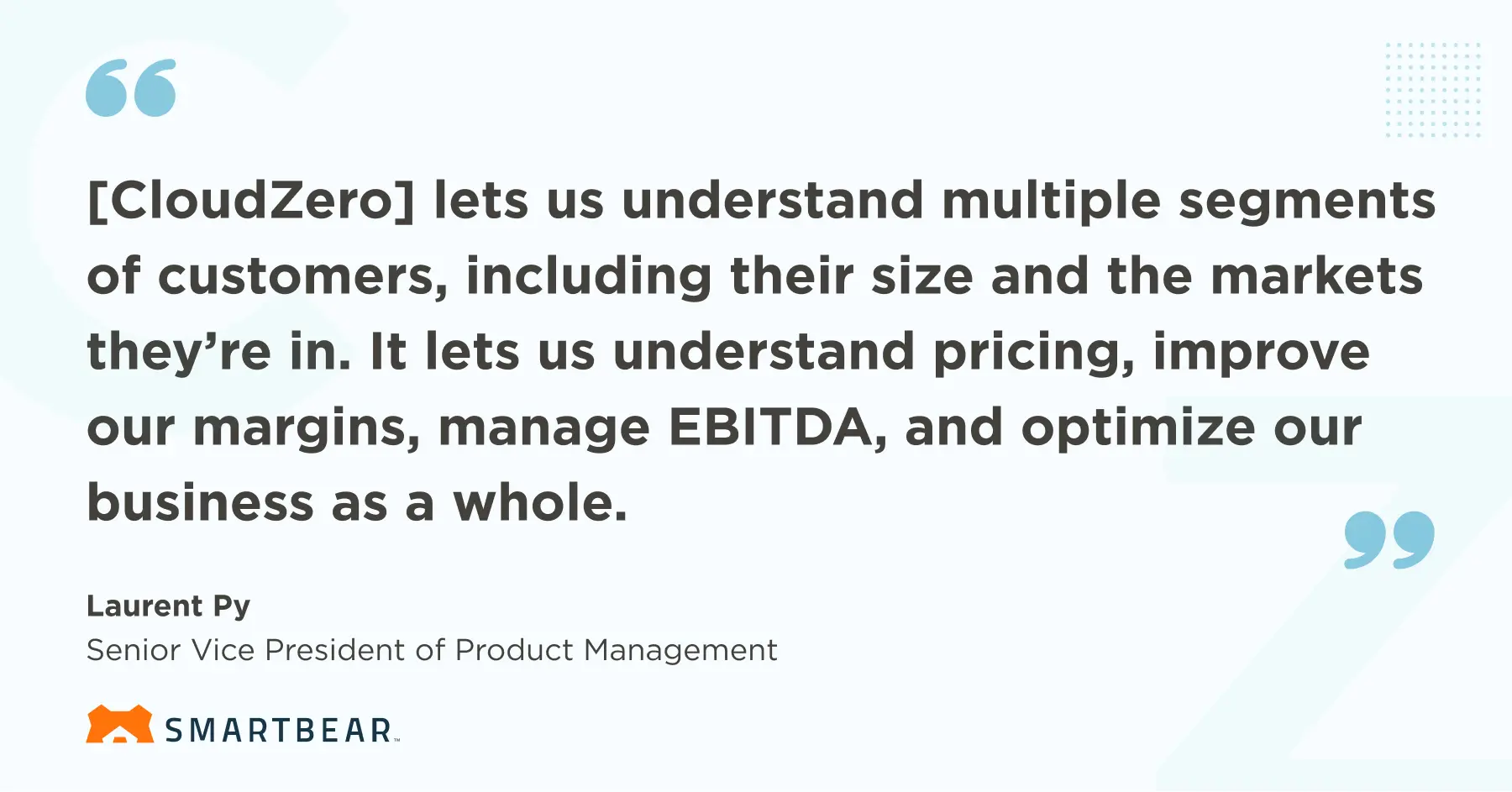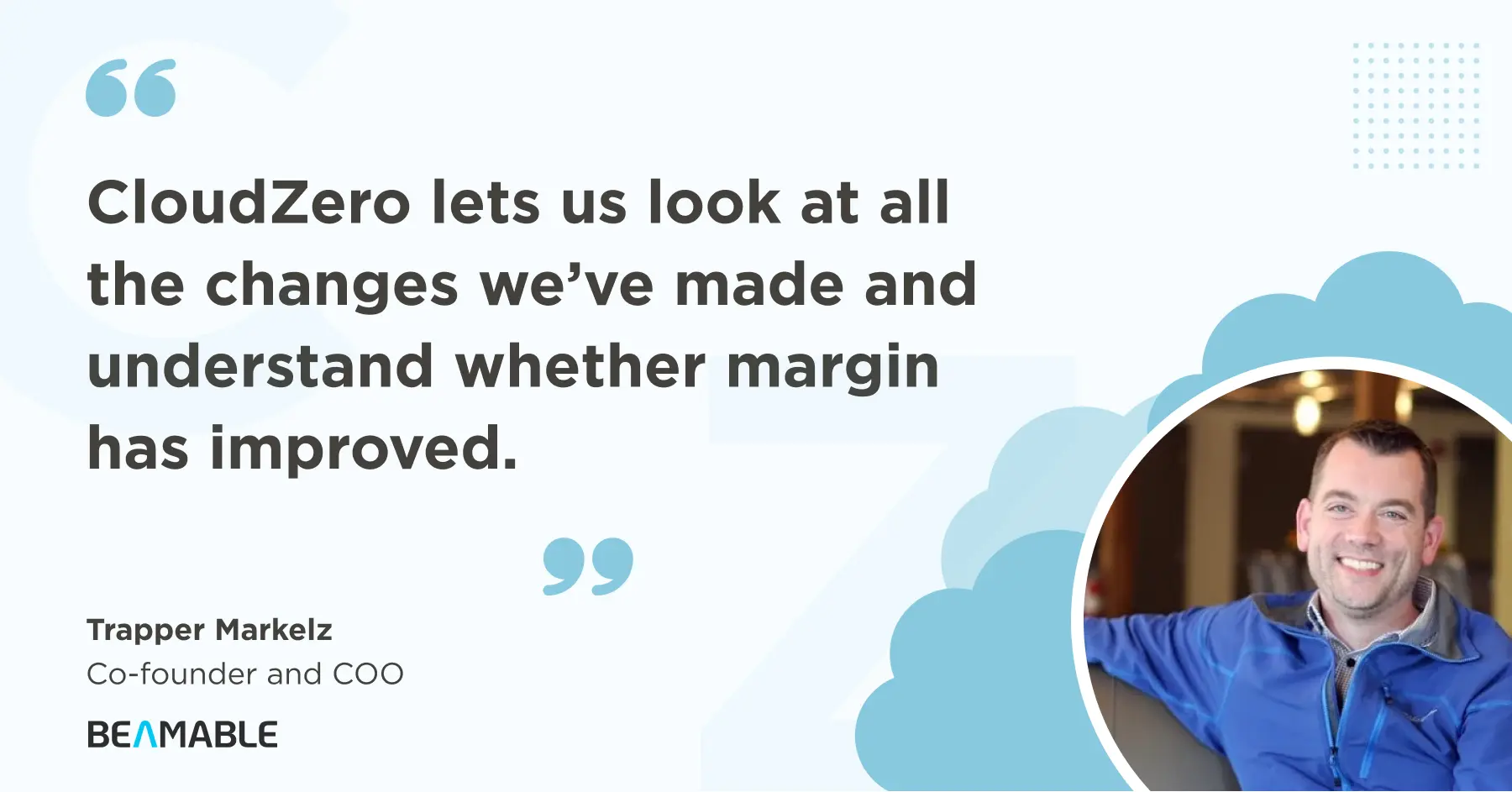At CloudZero, we advocate measuring every cloud cost metric that makes the most sense for your business.
When you know your company’s unit economics inside and out, you can better inform each department, show them how to make smart decisions based on the information, and ultimately maintain control over your margins.
One of the most universally useful metrics to track is cloud cost per customer.
If you’ve never tracked your cost per customer, you might not know what you’re leaving on the table.
The following examples are case studies of clients CloudZero has worked with. All of them were able to use our cloud cost intelligence platform to make sweeping improvements across the board, from engineering to finance. You can read each company’s story in more detail on their linked pages.
For now, let’s focus on how tracking just one metric — cost per customer — can completely change the way a company operates for the better.
3 Ways Measuring Cloud Cost Per Customer Has Helped Businesses
1. SmartBear increased product value by marketing and pricing its products more efficiently
As a company that helps software developers build products more quickly and efficiently, SmartBear understands that quality matters above all else.
When it became apparent that the company needed to take its own quality to the next level by understanding its unit economics on a granular level, SmartBear implemented CloudZero’s cost intelligence platform.
Specifically, the goals were:
1) To tie exact costs to specific tenants and;
2) Develop better pricing and marketing models based on a more complete understanding of how much it costs to support each individual customer.
Within an hour of setting up the platform, the SmartBear team had configured CloudZero to track each of the company’s ten cloud accounts. They were able to bypass the usual tagging issues they had always wrestled with.
The following day, the team logged into the CloudZero dashboard to discover they already had the information they needed. Using this data, the product marketing team re-packaged each product to deliver the highest quality to each customer while staying true to the SmartBear business model.
By optimizing marketing and pricing strategies, SmartBear was able to put extra funding toward building out new features and improving the value of their existing products without increasing the overall budget.

2. NinjaCat used cost per customer data to facilitate productive client conversations and bolster its margins
NinjaCat specializes in optimizing marketing performance for businesses and agencies. Not only do NinjaCat’s customers come from a wide variety of industries, they also vary dramatically in size and revenue.
Some customers use few resources and stick to the lowest pricing tiers, while other users pay a premium price to churn through resources at a high rate.
Before NinjaCat found a solution, this variation made it difficult to understand which factors most influenced changes in cost. If costs spiked, the company had no way of knowing why it had happened.
Did a power user suddenly use more data? Was the increase just a natural fluctuation in costs? Or could it be due to something else?
The lack of connection between costs and customers caused some strife between the finance and engineering teams, who had two very separate and opposing goals. The engineers wanted to produce high-quality products quickly, at whatever financial costs were necessary, while the finance team felt the pressure to rein in costs.
To solve this problem — and unite the teams with some shared perspective — NinjaCat implemented the CloudZero platform.
The simplicity of CloudZero’s dashboards helped NinjaCat make rapid improvements to smooth out anomalies in its infrastructure and optimize existing products.
Tracking cost per customer in particular enabled the company to restructure pricing tiers in a way that made more sense for all parties.
The NinjaCat team had productive conversations with large customers who had once been a drain on resources and used their new data to come up with better agreements that fit their desired margins.
In turn, this freed up space for smaller customers to pay less than they had been while still contributing meaningfully to NinjaCat’s income. NinjaCat was able to boost revenue without having to re-engineer a single product or feature.
3. Beamable opened the door on new opportunities by figuring out which customers to target for growth
The number of video gamers around the world has grown every year, and that growth only accelerated when the pandemic forced people to spend more time at home.
Since Beamable provides tools that help developers build games more simply and efficiently, this increase in demand means two things: growth and opportunity.
The problem was that Beamable didn’t have a way to drill down into its costs per customer to figure out how best to take advantage of these plentiful opportunities. If some customers cost proportionally more than others, targeting products toward those users could have damaged the company’s margins rather than helped them.
Beamable turned to CloudZero as a way to start tracking how much each customer, game, and service costs.

Their team wanted to get as granular as possible; the goal was to track the exact amount of time each API ran for every customer that ran it, down to the millisecond.
They also asked CloudZero to develop additional custom metrics that would allow them to understand in microscopic detail how the services in every customer’s game contributed to total costs.
Armed with this knowledge, the Beamable team drilled down into smaller and smaller unit economics and took complete control over their infrastructure, pricing, and customer targeting decisions.
Now, all Beamable has to do is check the CloudZero dashboard to see how different choices and growth opportunities have affected the bottom line.
Interested In Measuring Your Cloud Cost Per Customer?
These case studies represent a small portion of the results made possible by harnessing data and turning it into valuable business insights.
When you understand how tracking unit economics such as cost per customer can help you completely reinvent your company for the better, suddenly it can seem like more of a gamble not to take advantage of the opportunities.
 to learn more about how CloudZero can help you understand your cost per customer — and any other metrics you’d like to track, such as cost per product or per feature.
to learn more about how CloudZero can help you understand your cost per customer — and any other metrics you’d like to track, such as cost per product or per feature.









